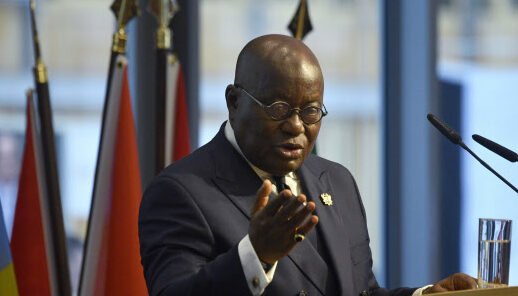Government has launched the third in a series of annual SDG Budget Reports as part of efforts to evaluate and define the funding gap for SDGs in order to create a financing mechanism that enables the country to fund and execute the global goals as expected.
The report shows that Goal 17 (Partnership for the Goals) had the most funding allocated to it – GH¢32billion in 2019 and GH¢34.8billion in 2020, while Goal 5 (Gender Equality) received GH¢26.1million in 2019 and GH¢65million in 2020 – the least to be allocated for a goal at the national level.
A major policy initiative under this goal was the Ghana COVID-19 Private Sector Fund. The Private Sector, through the Fund and in collaboration with government, completed the Ghana Infectious Disease Centre (GIDC) – which is intended to improve the medical diagnostic and research capacity of Ghana with regard to infectious diseases.
Total spending on the SDGs by government through MDAs came to GH¢31.4billion in 2019 and GH¢35.7billion in 2020; and rankings by regions also revealed that in both years Greater-Accra, Ashanti Region, Northern Region and Eastern Regions were among the regions to receive the most funds for SDGs.
Commenting on purposes of the budget, Finance Minister Ken Ofori-Atta said it will provide opportunity for stakeholders to discuss areas where more funds must be channeled to achieve the SDG goals, as well as help prioritise government spending.
“Having the opportunity to view our spending on the SDGs in such an organised, transparent manner annually enables government, the private sector, developing partners and our civil society partners to engage in a more constructive manner when it comes to financing the Sustainable Development Goals.
“Budgeting information provides the private sector, multilateral development and SDGs partners opportunity to determine which goals require more attention; or the MDAS and MMDAs that require financial or technical assistance in working toward achieving the Goals.
“It also provides government the opportunity to adjust its allocations to ensure an equitable distribution of resources across MDAs and MMDAS; and provides insight into resource distribution at the local level – such as which assemblies are receiving the most or least in funding toward implementation of the SDGs locally,” he said.
Ghana developed the SDGs Budget Report as a decision-making tool that helps government to track SDGs financing. Through the report, annual budget allocations and expenditures under each of the 17 goals can be asessed because the national budget is aligned to targets of the SDGs and Ghana’s Medium Term Development Plan.
In developing the SDGs Budget Report, an SDG Budgeting Manual was developed that allows for tracking budget allocations and expenditures toward SDGs targets and goals in all the Metropolitan, Municipal and District Assemblies (MMDAs), as well as for all Ministries, Departments and Agencies (MDAs).
Tracking the nation’s expenditures in relation to achievement of the SDG targets, which are connected to national development priorities, allows all stakeholders to analyse how far the various goals and metrics have progressed over time; thus establishing the framework for predicting how much more will be required to achieve the SDGs by the stated deadlines.
The report presents a comprehensive view of Ghana’s resource allocation to the SDGs in 2020, as well as government’s expenditures and allocations in 2019. It provides transparency in SDGs expenditures and enables the Private Sector, Development Partners, Civil Society Organisations and Social Enterprises to make informed funding decisions toward the Goals.










